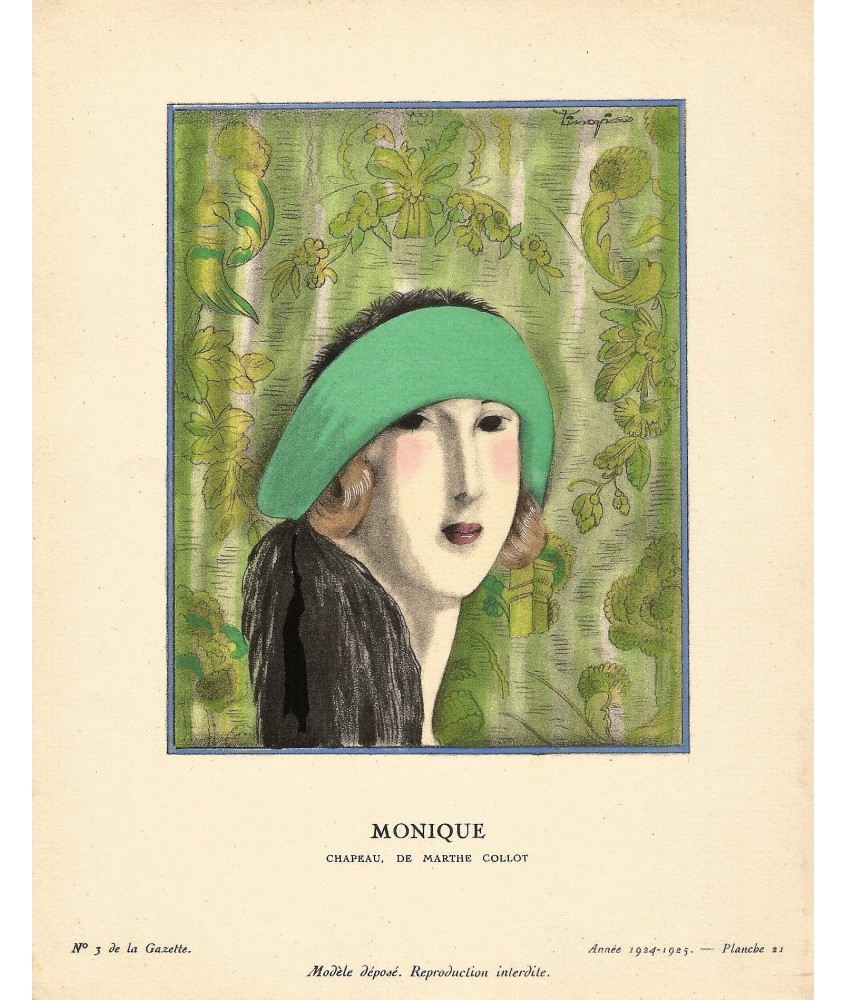- Out-of-Stock


Nº 3 GAZETTE DU BON TON. PLANCHE 21. 1924-1925
Principio del formularioThe Gazette du Bon Ton, put out by the retailer of the same name, was considered the trendsetting magazine of the era. Founded by Lucien Vogel and targeting Paris's upper class, it ran from 1912-1925
Principio del formularioThe Gazette du Bon Ton, put out by the retailer of the same name, was considered the trendsetting magazine of the era. Founded by Lucien Vogel and targeting Paris's upper class, it ran from 1912-1925. Only ten colour plates were printed per issue, and artists vied for the prestige of illustrating the latest Parisian fashion and lifestyle trends. As these pochoirs attest, the high style and iconic femininity made the items featured in the pages "must have's" -- right down to the prayer statue on top of the chest of drawers!
This pochoir - created when single layers of color are added by hand to a lithograph using a stencil – shows.
Alexandre Zinoview dit Zino is a Russian and French painter from the first half of the 20th century. His eclectic work, which can be admired in particular at the Historial of the Great War in Péronne, the Museum of the Thirties, the Manufacture of Roubaix [archive] and the Museum of the Great War [archive] of Meaux, takes the form of numerous paintings and engravings, but also of drawings, stage sets or fashion engravings.
Known in particular for his work as a designer and decorator during the Roaring Twenties, he was recently rediscovered as a singular character from Montparnasse in the 1910s and an original war painter of the Great War.
Zinoview is one of the many foreign artists hired by Blaise Cendrars to join the Foreign Legion to defend their adopted homeland. He served there for the duration of the war, notably as an interpreter for Russian troops engaged in France. Without any privilege or status linked to his artistic talent, he fought among the soldiers, for example on the Chemin des Dames in 1917 during the engagement of the Russian Expeditionary Force in France and reported, on the battlefield, on his experience by numerous drawings and paintings which reveal the complex interior life of the soldiers as much as their harsh conditions of material life.
This war work, kept entirely in its workshop fund by the artist during his lifetime, as well as his front journal [archive], could only be exhibited and rediscovered recently and has given rise to historical works which made it possible to reconstruct the original trajectory of the artist.